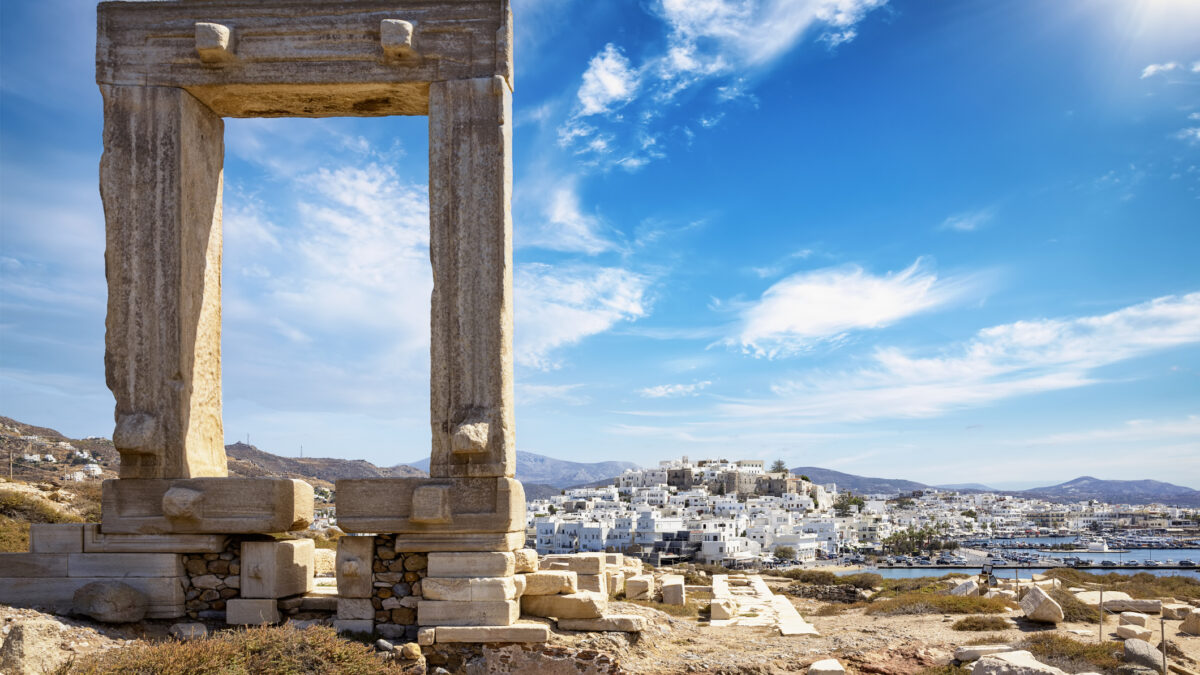The largest island in the Cyclades, Naxos has been renowned for centuries for its natural wealth and fertile lands. In fact, two of its locales, the Alyki wetland and the central mountainous–southern coastal zones, have been recognised as protected areas of the Natura 2000 European network.
The beaches of Naxos are a major contributor to what sets the island apart: the island’s extensive coastline hosts myriad options that cater to just about everyone – the southern beaches are wide, open and sandy, with crystal-clear waters, while those on the island’s northern coast are rugged and pebbly. Due to the island’s size, it is possible to enjoy a day at the beach even at the peak of tourist season, with quiet, secluded places to go for a swim away from the crowds.
But Naxos wouldn’t be the island it is without its striking mountainous terrain as well. The island is home to the highest mountain in the Cyclades, Za, which stands 1,004 metres tall. It is named after the god Zeus, who, according to myth, was raised on the island. Naxos was also associated with two other classical Greek gods. One was Dionysus, the patron deity of the island’s famous vineyards. The other was Apollo. In fact, it is Apollo who springs to mind when you arrive at the island’s main port: the emblematic marble entrance known as Portara on the islet of Palatia was once the door to a temple dedicated to the god. Portara is a popular destination throughout the day, and sunsets there are especially striking.
Passing through the port and Portara, visitors will find themselves in Chora, the island’s main settlement. A stroll through the town’s winding alleys with their characteristic Cycladic architecture is sure to please, while the local castle is a reminder of bygone days when the Venetians ruled the island.
Naxos is rightly renowned for its picturesque villages. Everyone has a unique character that adds its own special touch to the island’s overall image. From Apeiranthos with its history and culture, which expanded all the way to Crete, to the stately Chalki, the island’s old commercial centre, each village is authentic, unique, and sure to charm.
Cuisine
Naxos is without a doubt among Greece’s most vital culinary destinations. Self-sufficiency is a major aspect of the island, and as a result, the local products and cuisine have a vibrant character. Naxos is the largest producer of vegetables and agricultural products throughout the Cyclades. Historically, the island has featured three types of cuisine. Firstly, there is the fish – and seafood-dominated cuisine of the seaside villages. Then there is the cuisine of the agricultural villages, where locally grown vegetables are king. And finally, the villages in the mountainous regions of the island have a cuisine that focuses more heavily on meat and fatty dishes. The local taverns reflect this: meat is always a mainstay inland and in the mountains, while establishments in seaside villages like Moutsouna lean more heavily towards fish and seafood.
Today, cheeses from Naxos occupy a prominent position in international cuisine. The most renowned of these is the local graviera, with its characteristic buttery taste. The potatoes grown on the island are said to be some of the tastiest in the world, a fact that just about everyone who has sampled them would rush to confirm. Finally, the island also produces citron, a citrus fruit long used to make liqueur. These are just three examples – albeit renowned – from a truly diverse array of choices that are sure to satisfy all culinary desires.
At the island’s taverns, coffee shops and restaurants, patrons will have the opportunity to sample “homemade” recipes such as apeirathitikos rostos (a pork dish prepared in a wine sauce with garlic, ideally served with thick-cut pasta), rabbit stewed in lemon sauce, coq au vin, not to mention gardoumia, a dish for more adventurous palates, made of lamb’s intestines. All dishes are, of course, made with locally sourced ingredients and pair well with the local raki. In addition, visitors to Naxos have the opportunity to sample excellent steak sourced from the island’s cattle. As far as sweets go, Naxos is known for its melachrino, a confection reminiscent of walnut cake made with citron liqueur.
How to get there
Naxos sits at the heart of the Cyclades and is serviced by ferry from the ports of Piraeus and Rafina, as well as by air.










